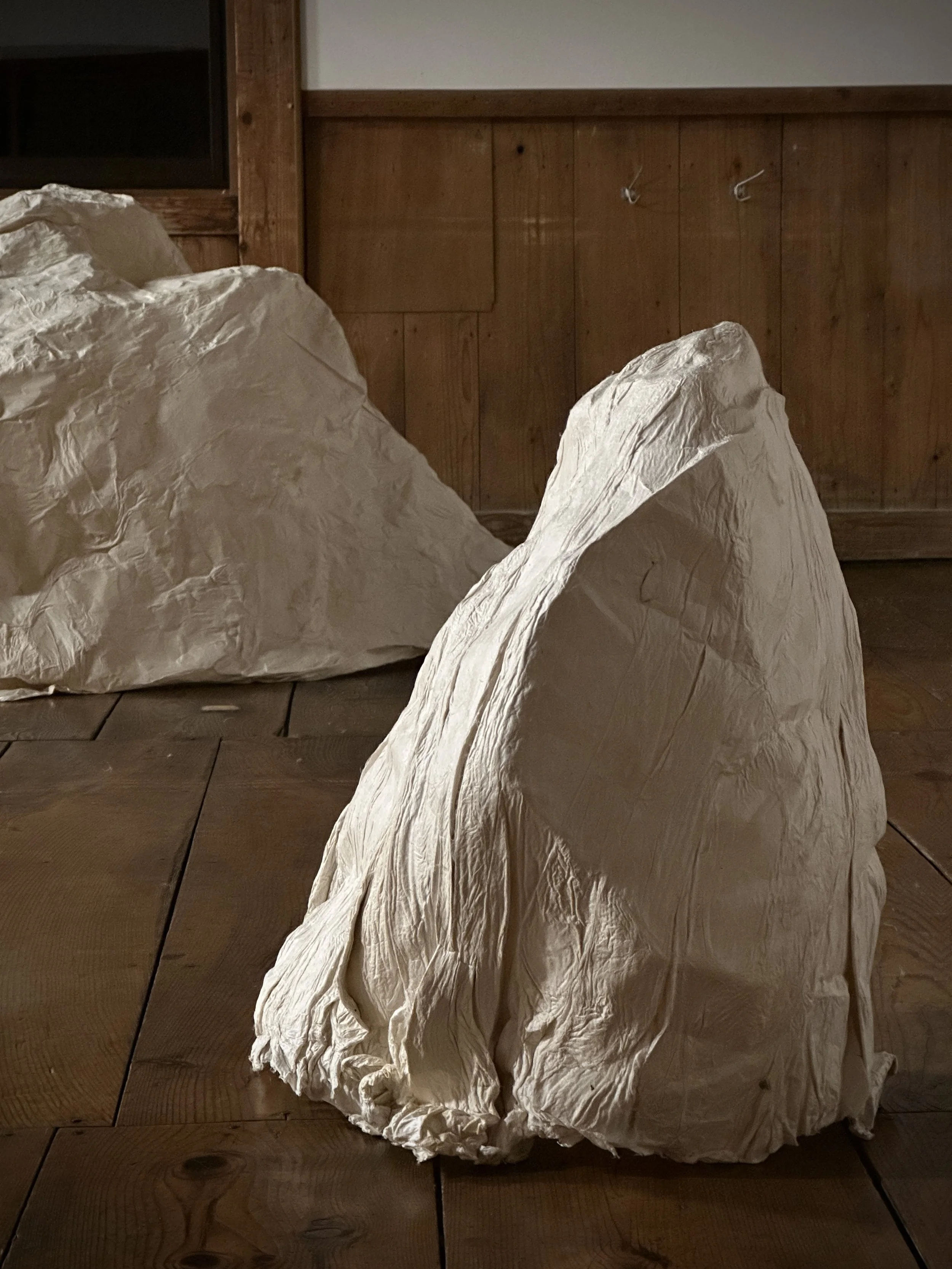











In this exhibition, Samimi assumes the intertwined roles of artist, gatherer, and caretaker, bringing together materials that embody the layered histories of Nishiaizu, Fukushima, Japan.
Stones shaped over geological time, wood from a shrine’s fallen fir tree, handmade washi forms draped over forgotten garden stones, and earth pigments derived from local river soil form an installation attentive to both presence and loss. These materials—altered by industry, weathering, and human touch—serve as portals into the intertwined timelines of landscape and memory.
Within the former classroom, the works create a quiet counterpoint to the energy that once filled the space. Here, the stones become the oldest inhabitants, reminding us of long-standing continuities that underlie human settlement and departure. The tree fragments, reimagined as a contemplative structure, echo centuries of devotion; the paper stones hover between weight and lightness, body and ghost; and the earth-painted scroll gestures simultaneously toward landscape and deep past.
Collectively, the exhibition reflects on the region’s depopulation and the shifting boundaries between what is preserved, overlooked, or allowed to decay. Through these gathered remnants, Samimi invites the viewer to encounter the subtle spiritual charge held within material fragments—and to witness the quiet persistence of the non-human world as it endures beyond human narratives.